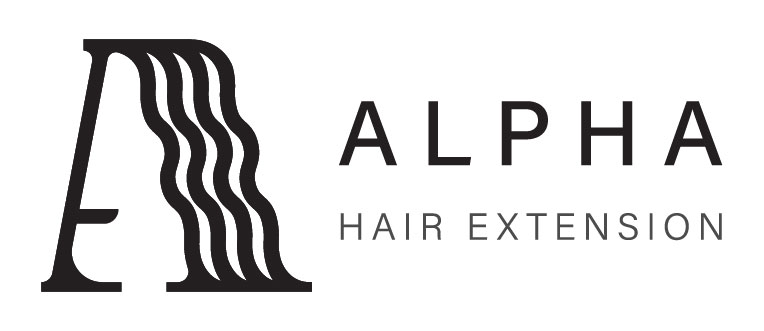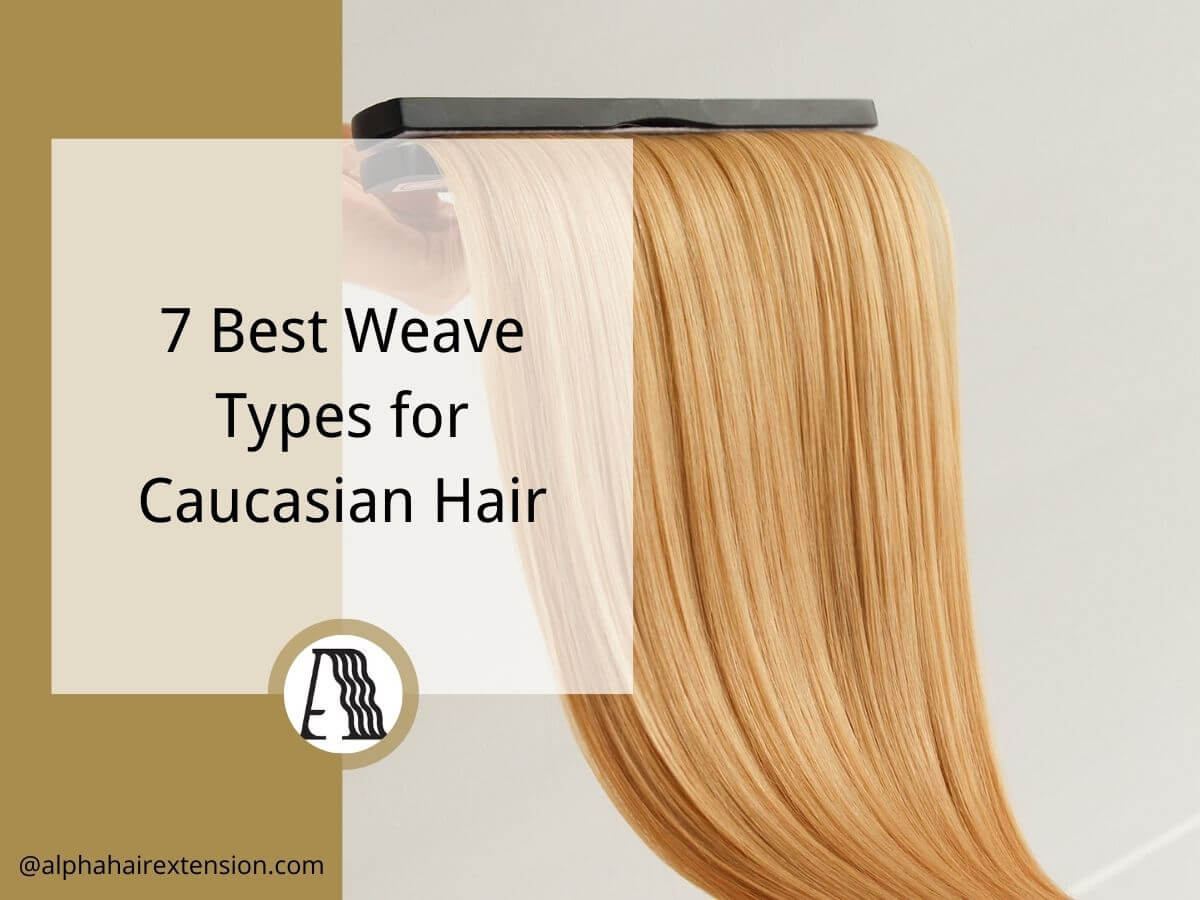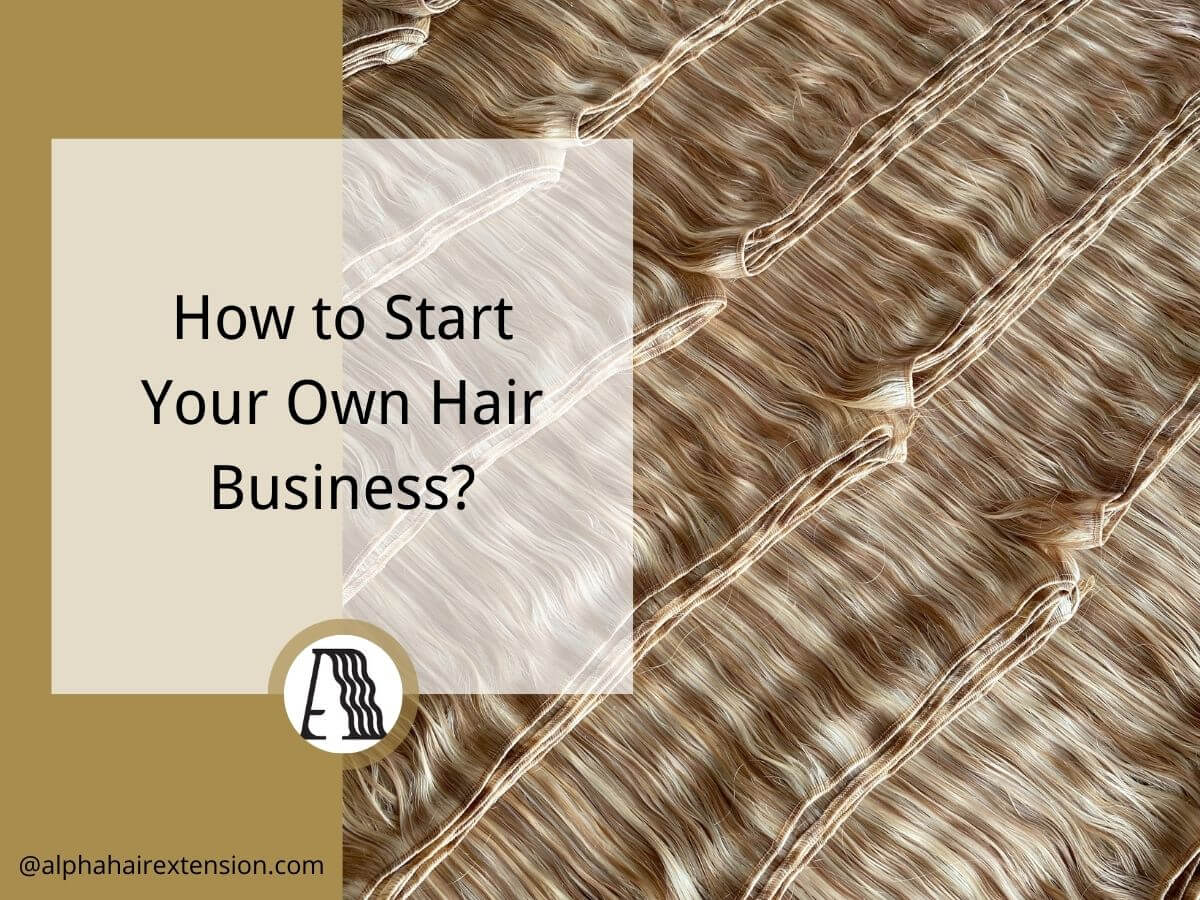I once thought all hair extension bonds were the same. Then, a supplier introduced a method that claimed to last longer. It sounded promising. Weeks later, customers complained about bonds breaking too soon.
That experience taught me that not every bonding method delivers as promised. Some are strong but uncomfortable. Others feel great but don’t last.
Since then, I’ve tested multiple bonding techniques, talked to manufacturers, and analyzed customer feedback. Now, I know what works and what doesn’t.
This article will break it all down for you. You’ll learn:
- The seven main bonding methods and how they work.
- The advantages and drawbacks of each technique.
- How to maintain consistent quality and reduce product defects in hair extensions.
By the end, you’ll have the insights to select the right bonding techniques, improve your product offering, and ensure client satisfaction.
Let’s dive in!
1. Keratin Bond (Fusion) Extensions
Keratin bond extensions, also called fusion extensions, use a keratin-based adhesive to attach strands to natural hair. A heat tool melts the bond, securing the extension. Once set, it’s nearly invisible.
Upon researching, I found that these extensions can last up to six months, but that depends on the quality of the bond, the application method, and the hair type.
Are they worth the investment? That depends on what you’re looking for.
Pros and Cons of Keratin Bond Extensions
Pros
- High-End Market Appeal: Salons charge premium prices for keratin bond services, making it a profitable product for professional use.
- Customizable Application: Stylists can blend colors and textures for a seamless match, increasing demand for variety in stock.
- Exclusive to Professionals: Since fusion requires specialized training and tools, salons must reorder from trusted suppliers, ensuring repeat business.
Cons
- Slow Application Process: Installing a full head takes 3 to 6 hours, limiting the number of clients a stylist can serve daily.
- Potential for Product Waste: If not stored properly, keratin bonds can dry out or become too brittle to use.
Is This the Right Product for Your Business?
If your customers are high-end salons or stylists trained in fusion extensions, this method makes sense. It offers long-term durability and higher service pricing.
But if your clients focus on quick, reusable options, this may not be the best fit. Fusion bonds are a commitment, and not every stylist or customer wants that.
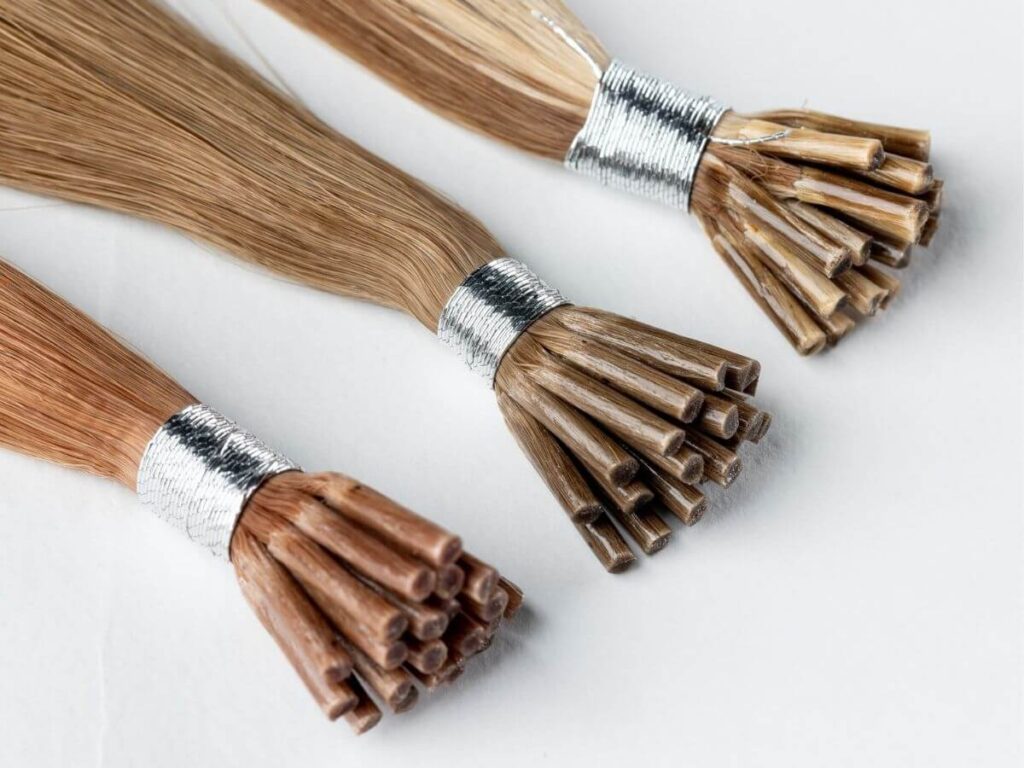
2. Tape-In Hair Extensions
Tape-in hair extensions use double-sided adhesive strips to attach wefts to natural hair. I sandwiches a section of hair between two tape-ins, pressing them together for a secure hold. The process is fast, clean, and doesn’t require heat or special tools.
On average, tape-ins last 6–8 weeks before they need to be repositioned. Some adhesives provide a strong hold, while others weaken with washing, leading to slippage and inconsistent wear time.
Pros and Cons of Tape-In Hair Extensions
Pros
- Fast-Growing Market Segment: Tape-ins are increasingly popular in salons, driving repeat orders for adhesive refills and new wefts.
- Quick Installation: A full set can be applied in under an hour, allowing stylists to take more clients per day.
- Reusable Extensions: With proper care, tape-ins can be removed and reinstalled, increasing their overall lifespan.
- Less Bulk in Inventory: Compared to other extensions, tape-in wefts take up less storage space, making inventory management easier.
Cons
- Adhesive Quality Varies: Lower-grade tape weakens after a few washes, leading to early slippage and potential customer complaints.
- Inconsistent Market Demand: While popular in some regions, demand for tape-ins can fluctuate based on styling trends.
Is This the Right Product for Your Business?
If your clients focus on fast services and repeat customers, tape-ins can be a strong addition. They work well for salons that prioritize efficiency and stylists who want reusable options.
But if you sell to high-end salons that specialize in long-term wear, keratin or I-tip extensions may be a better fit. Tape-ins require frequent reapplications, which isn’t ideal for every business model.
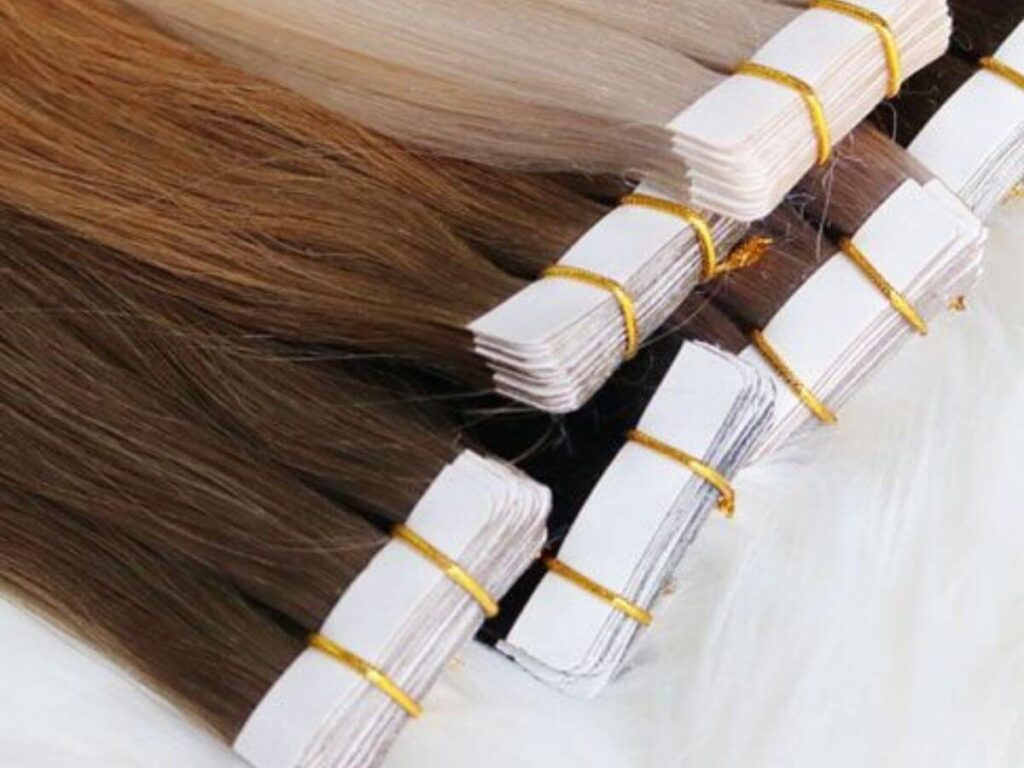
3. Clip-In Hair Extensions
I’ve seen firsthand how fast clip-ins sell. Not every customer wants a long-term commitment. Some need volume for an event, a photoshoot, or just a change for the weekend. Clip-in extensions give them instant transformation—without the wait, the glue, or the maintenance.
It come with small, flexible clips sewn into the weft, allowing customers to attach and remove them in minutes. They require no heat, no glue, and no professional application, making them a popular retail product.
Pros and Cons of Clip-In Hair Extensions
Pros
- High Turnover Product: Clip-ins move quickly in retail and e-commerce, making them a strong choice for distributors and online sellers.
- Minimal Maintenance for Businesses: Unlike tape-ins or keratin bonds, clip-ins don’t require adhesives or specialized tools, reducing product-related complaints.
- Wide Customer Base: Works for beauty stores, online retailers, and salons offering retail products, increasing potential sales channels.
- Seasonal and Promotional Opportunities: Clip-ins sell well during holidays, wedding seasons, and promotional events, making them a great product for limited-time offers.
Cons
- Not a Salon-Exclusive Product: Since customers can apply clip-ins themselves, salons don’t rely on them for service revenue, limiting bulk orders from stylists.
- Requires Strong Branding and Packaging: Poor packaging or weak clips can lead to higher return rates, impacting profit margins.
Is This the Right Product for Your Business?
If you sell to retailers, e-commerce stores, or distributors, clip-in extensions can be a high-volume, fast-moving product. They’re affordable, reusable, and don’t require professional installation, making them a strong option for businesses targeting a broader market.
However, if your clients focus on high-end, long-term extensions, clip-ins may not be the best fit. They are temporary, not permanent.
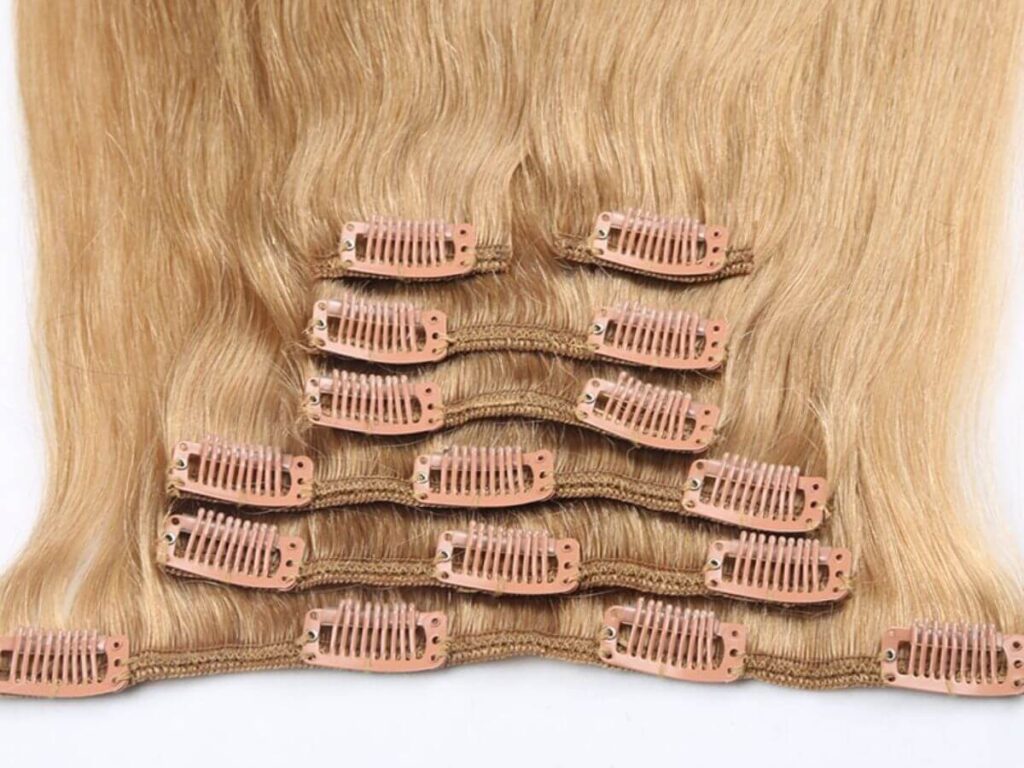
4. Sew-In (Weave) Extensions
Unlike temporary options, sew-ins require a professional touch. Clients return every few months for maintenance, keeping salons and stylists booked. That consistency makes sew-ins a reliable revenue stream for businesses in the hair industry.
The process takes time—braiding the natural hair, sewing in the wefts—but the results last. With proper installation, sew-ins stay in place for weeks without slipping or needing daily adjustments. That’s why they remain one of the most trusted methods.
Pros and Cons of Sew-In Extensions
Pros
- Steady Demand from Professional Stylists: Many stylists specialize in sew-ins, ensuring consistent product turnover and repeat purchases.
- Larger Wholesale Orders: Since sew-ins require multiple wefts for a full installation, salons and distributors often order in bulk, increasing sales volume.
- Lower Return Rates: Unlike clip-ins or tape-ins, sew-ins are a salon-only product, reducing the risk of customer dissatisfaction from incorrect self-application.
Cons
- Higher Stylist Labor Costs: Since installation takes time, salons must charge more for the service, which can limit client affordability.
- Not Ideal for Fast-Turn Retail Sales: Unlike clip-ins or tape-ins, sew-ins don’t appeal to direct-to-consumer markets, reducing e-commerce potential.
Is This the Right Product for Your Business?
If your customers are professional stylists or salons, sew-in extensions are a strong product to carry. They provide a long-term solution for clients and keep stylists busy with maintenance services.
However, if your business focuses on retail or e-commerce, sew-ins may not be ideal. Since they require professional installation, they aren’t as easy to market to consumers looking for quick, at-home solutions.
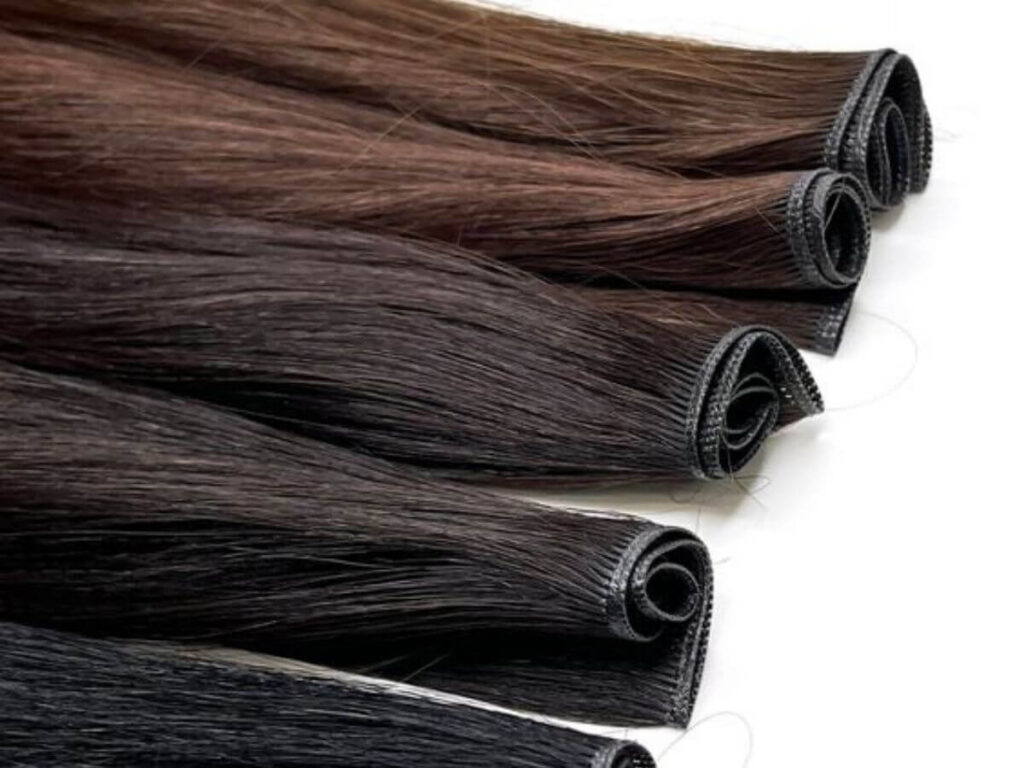
5. Glue-In Hair Extensions
Glue-in hair extensions use a liquid adhesive to bond the weft directly to the natural hair. The glue is applied in thin layers, pressed into place, and left to dry. Once set, the extensions stay secure for several weeks.
I learned early on that not all adhesives are created equal. Now, I only work with suppliers who understand the chemistry behind bonding glue. If you’re considering glue-in extensions for your business, you need to know what works and what doesn’t.
Pros and Cons of Glue-In Hair Extensions
Pros
- Fast and Efficient Application: A full set takes less than an hour, allowing stylists to see more clients per day.
- Lower Initial Investment: No need for sewing kits or heat tools, making it an accessible method for new stylists.
- Consistent Demand for Adhesives: Bonding glue requires frequent replenishment, creating repeat sales for distributors and suppliers.
- Attractive for Budget-Friendly Salons: Some clients prefer glue-ins for short-term use, making them a low-cost extension service.
Cons
- Higher Potential for Product Complaints: Salons expect consistent adhesive performance, and poor-quality glue can lead to returns and lost trust.
- Limited Appeal for High-End Salons: Premium clients often prefer longer-lasting methods, making glue-ins less desirable in luxury markets.
Is This the Right Product for Your Business?
If your business serves high-volume salons or budget-friendly stylists, glue-in extensions can be a profitable, fast-moving product. They work well for salons that need quick, affordable extension solutions.
But if your clients expect high-end, long-term wear, glue-ins might not be the right fit. They are temporary, not a luxury option.
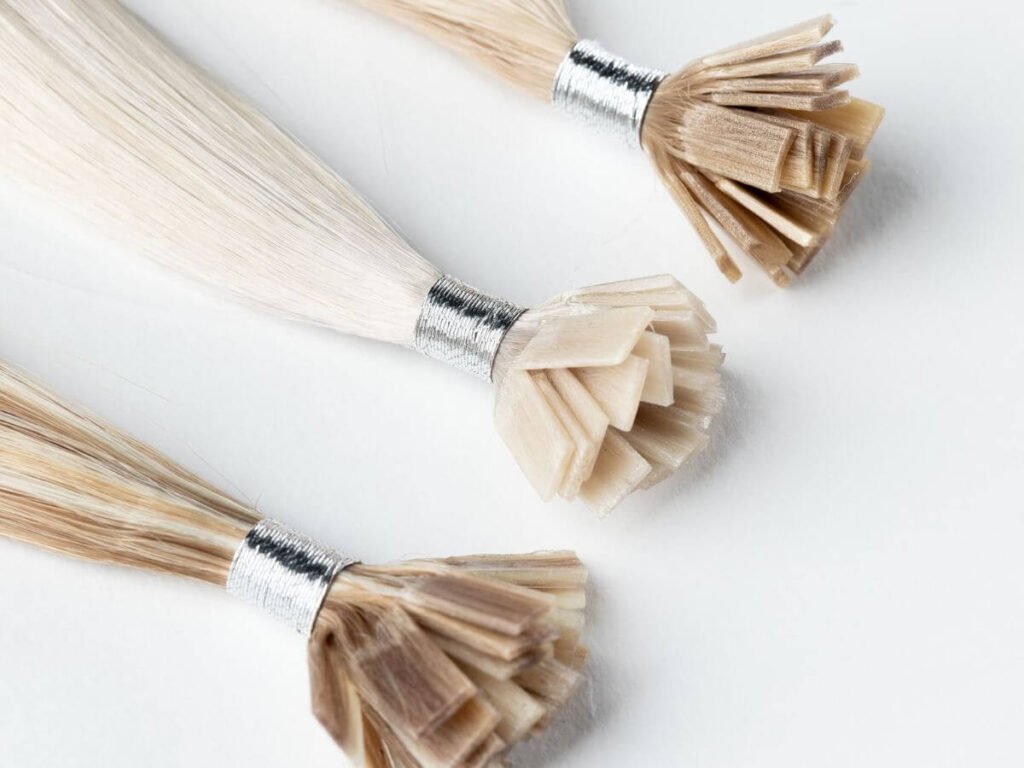
6. Cold Fusion (I-Tip) Extensions
Cold fusion, also known as I-Tip extensions, uses small beads or micro-rings to attach individual strands of hair without heat or glue. A stylist threads natural hair through the bead, inserts the I-Tip extension, and clamps the bead shut with pliers. The result? A secure, flexible hold that lasts for months.
Pros and Cons of Cold Fusion (I-Tip) Extensions
Pros
- Reusable Extensions: I-Tips can be removed and reinstalled, increasing their long-term value for salons and reducing waste for stylists.
- Long-Lasting Wear: With proper care, cold fusion extensions last 3 to 6 months, making them a strong option for premium services.
- Higher Price Point: Many stylists charge premium rates for cold fusion due to its individualized application process.
Cons
- Time-Intensive Application: Installing a full head takes 3 to 5 hours, limiting how many clients a stylist can serve in a day.
- Specialized Training Required: Not all stylists know how to apply cold fusion correctly, which reduces the potential customer base for suppliers.
Is This the Right Product for Your Business?
If your business supplies professional salons or stylists specializing in high-end extensions, cold fusion can be a profitable addition. It’s a premium service that attracts repeat customers and high-ticket sales.
However, if you focus on fast-moving retail products or short-term extensions, cold fusion may not be the best fit. The application time, skill required, and higher upfront cost mean it appeals to a niche market rather than mass buyers.
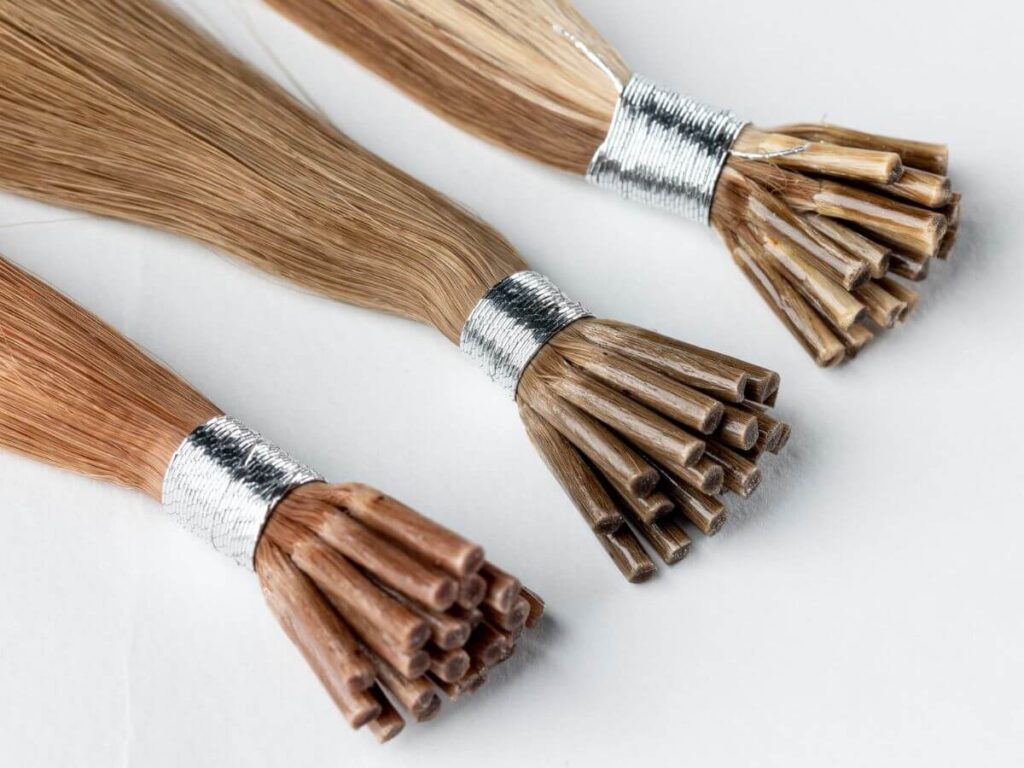
7. Halo Hair Extensions
I didn’t take halo extensions seriously—until I saw the sales numbers.
At first, I thought halos were just another trend. A single weft of hair attached to a clear wire? It seemed too simple. But then I spoke to retailers and e-commerce sellers who couldn’t keep them in stock.
Unlike other extensions, halos require no glue, no clips, no beads—just a single piece that sits securely on the head. Customers love the ease, and businesses love the high turnover rate. While salons don’t profit from installation, they can sell halos as an add-on product or a retail upsell.
Pros and Cons of Halo Hair Extensions
Pros
- Fast-Moving Retail Product: Halos are popular in e-commerce, beauty stores, and salons offering retail products.
- Lower Risk of Product Returns: Because there’s no adhesive or complex application, customers are less likely to experience installation issues.
- One-Size-Fits-Most Approach: Adjustable wires make halos easy to customize, reducing the need for multiple size variations in stock.
- Attractive for Seasonal Promotions: Halos sell well during wedding season, holidays, and special events, increasing profit potential for retailers.
Cons
- Market Saturation: Many brands sell halos, making it harder to stand out without strong branding or premium-quality hair.
- Higher Inventory Costs: Since halos are a single-piece product, businesses must stock a variety of lengths, colors, and textures to meet demand.
- Limited Upsell Opportunities: Unlike tape-ins or keratin bonds, halos don’t require maintenance products, meaning fewer repeat sales for adhesives, removers, or tools.
Is This the Right Product for Your Business?
If you sell to beauty retailers, e-commerce stores, or distributors, halos are a high-turnover product that attracts impulse buyers and customers who want an easy solution. They work well in non-salon-focused businesses and can be a fast-moving inventory item.
However, if your business primarily serves professional salons and stylists, halos may not be the best fit. Since they don’t require training, tools, or maintenance, they won’t drive repeat service revenue for salons.
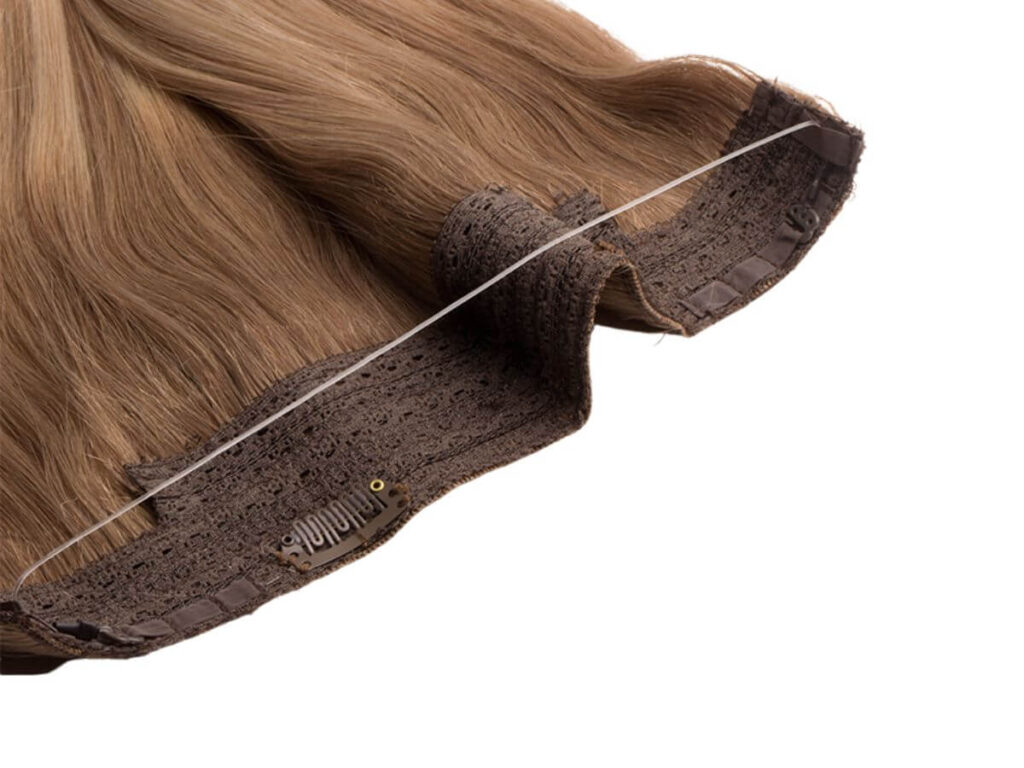
Conclusion
Every bonding method has strengths and weaknesses. Some offer long-term durability, while others focus on speed and convenience. Choosing the right one depends on your business model and customer needs.
I learned that the wrong bonding method leads to product returns, frustrated stylists, and lost sales. The right one? It builds loyal customers and repeats orders.
Now it’s your turn. Which method fits your business best?
If you need help selecting the right extensions for your market, contact us today. Let’s find the best products to grow your business.
Explore Related Resources
Want to see more products? We’ve got plenty of options that might just be the perfect fit for you:
Still haven’t found what you’re looking for? Don’t hesitate to contact us. We’re available around the clock to assist you.
